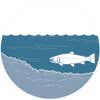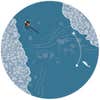Double Fly Rigs for Winter Trout
To land more late-season trout, make it a double

Lots of trout fly anglers hang up their gear in winter, which is exactly why a lot of other fly guys love the cold season. While most bugs are gone, so are the crowds. The trade-off for having the water all to yourself, of course, is that winter trout aren’t typically as eager to pounce on a fly as they were back in spring. This time of year it’s a game of patience, persistence, and finesse, above all. Whether you’re after a post-Christmas holdover or New Year’s Day wild brown, these double fly rigs will keep rods bent despite those iced-up guides.
The Breakfast Sampler Rig

Let’s be honest, stocked trout can be lazy even during warmer times. Drop the water temperature below 40 degrees in a freestone stream, and they can become practically comatose. To expend as little energy as possible, fall’s leftover stockers will move to deep, slow runs. When you find good water, pound it with this rig, because it can take a while for a frozen fish to make a move. Dead drifting scores, but impart twitches on occasion to try triggering a reaction bite.
Short Work: A short 3-inch dropper helps you detect subtle hits on the egg faster.
Single serving: A single egg fly ahead of the leech gives trout a smaller—yet highly visible—meal choice. Make sure it’s a different color than the leech’s egg to provide the fish with more options.
Suck it Up: A weighted egg-sucking leech gets this rig down fast, provides some wiggle and flutter, and creates an easy target for sluggish trout.
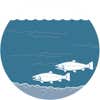
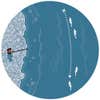
The Two-Tone Rig
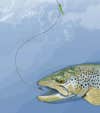
Little black stoneflies hatch all winter across the country, providing reliable forage for wild fish. Slower riffles and tailouts are prime fish posting locations when these bugs are present, but even if they’re not, a little black stone rarely gets snubbed. To up the ante, a Green Weenie rigged above a stone provides a second target with a different color. If a trout doesn’t see one, it may see the other and take the shot. While this rig works in freestone rivers, it’s extra-potent on limestoners and in tailwaters.
Measured Out: A 12-inch dropper between flies is ideal, as this length keeps the natural-looking black stone close to the bottom, while the Weenie wiggles away up higher, coaxing a reaction strike.
Light Weight: Add just enough split shot between the flies to get the stonefly ticking bottom. If you’re hanging up too often, try one shot lighter or ditch the weight entirely.
Mini Mite: Though you may be tempted to fish a large fly, winter stones are tiny. Opt for a size 18 or 20 to match the hatch.
